Having a small flock of chickens doesn’t have to be hard to care for. I have found a simple setup and routine that makes chicken keeping fun, but it wasn’t easy getting there.
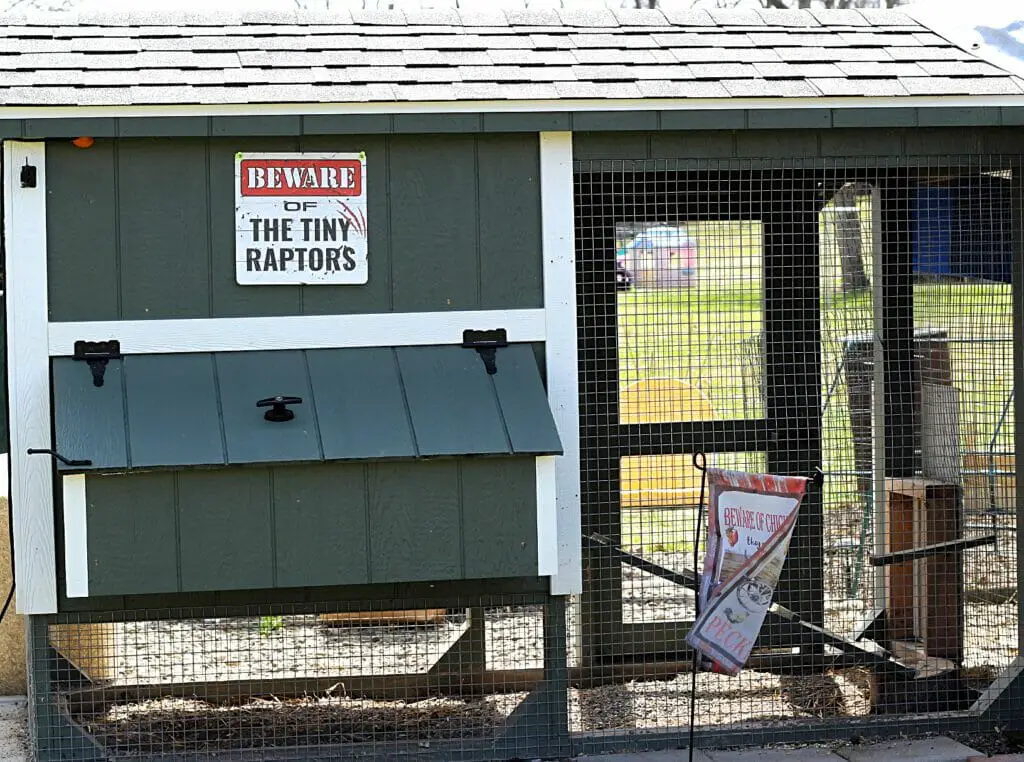
This post may contain affiliate links. Please read my disclosure policy.
Starting out in the care of chickens
I first decided to start keeping chickens two years ago. I read every blog and watched every YouTube video I could find. I researched high and low….and I still made mistakes. Though my brain was packed with a ton of chicken knowledge, I quickly found the best way to care for chickens is through trial and error.
My hope is that you will take these trials and tribulations and come up with your own awesome chicken keeping plan.
The coop

Before you even think of buying baby chicks, the first thing you need to do is have a coop ready. Depending on how many chickens you plan on keeping, decide on the size of your coop. I ordered an Amish built coop that is 4×8 foot with a 4-foot square coop, 4-foot run, and 4-foot under the coop for additional run space. This coop is big enough for 5 chickens or allows for 2-3 square foot per chicken.
This is a very well-built coop, and the cost was worth it. However, looking at it now, I wish I had gone bigger (There really is such a thing as chicken math!). I only need a few eggs for myself and to give to my family, but I did not account for the fact that as chickens get older, they lay fewer eggs.
This means that approximately every 2-3 years, I will need to add to my flock to continue getting a good supply of eggs. Unless you plan on culling your hens that stop laying (which I can NOT do), you will need to account for adding to the flock.
Also keep in mind that chickens need to have companions, i.e., you cannot have just one chicken. This means that if you need to add to your flock, you cannot purchase just one chick to add to your flock. I initially bought six bantams to start my flock.
Automatic coop door
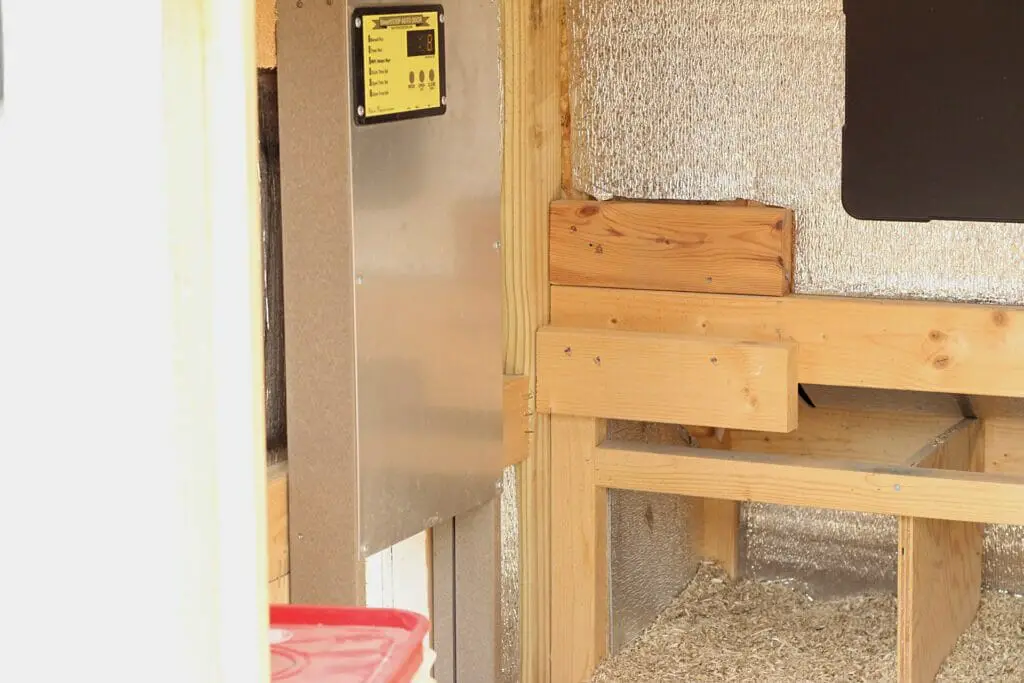
Can I just say an automatic chicken coop door is a must! I love knowing my girls are safe and sound inside at night plus are able to get out early in the morning without depending on me. This door is convenient when I need to go away for a weekend or during inclement weather and I can’t get out to the coop. This door is made with steel parts and uses an actuator, not a string, to open and close. The door can be setup for use with electricity or solar power. The company is also working on wifi capability which will enable control of the door via an app. I highly recommend this coop door in the care for chickens and you can find their website here.
Chicken coop bedding
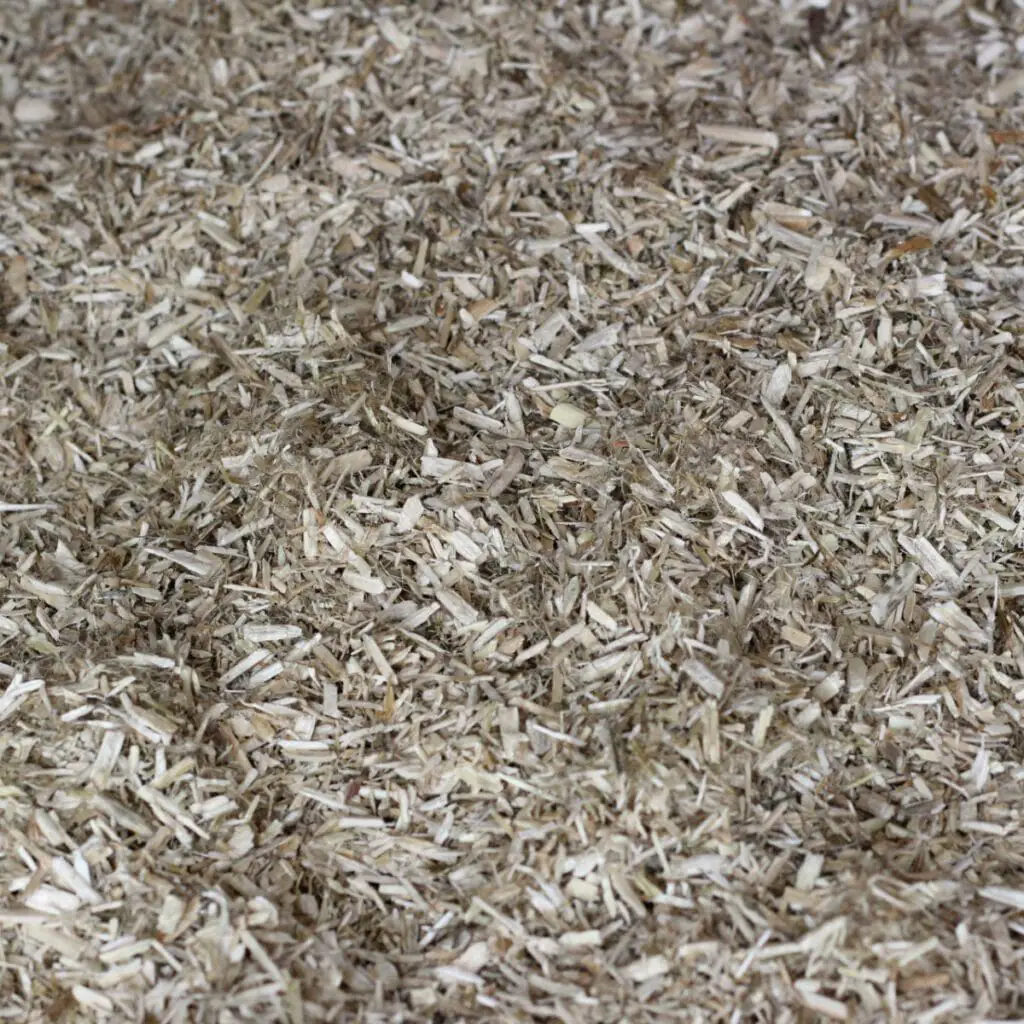
I researched many resources on what is the best bedding to use in a chicken coop. What I found was using hemp bedding was the best choice for my care for chickens. It is highly absorbent and great for composting. It may seem expensive, but I only need one bale per year which makes it extremely economical.
The small flock of chickens
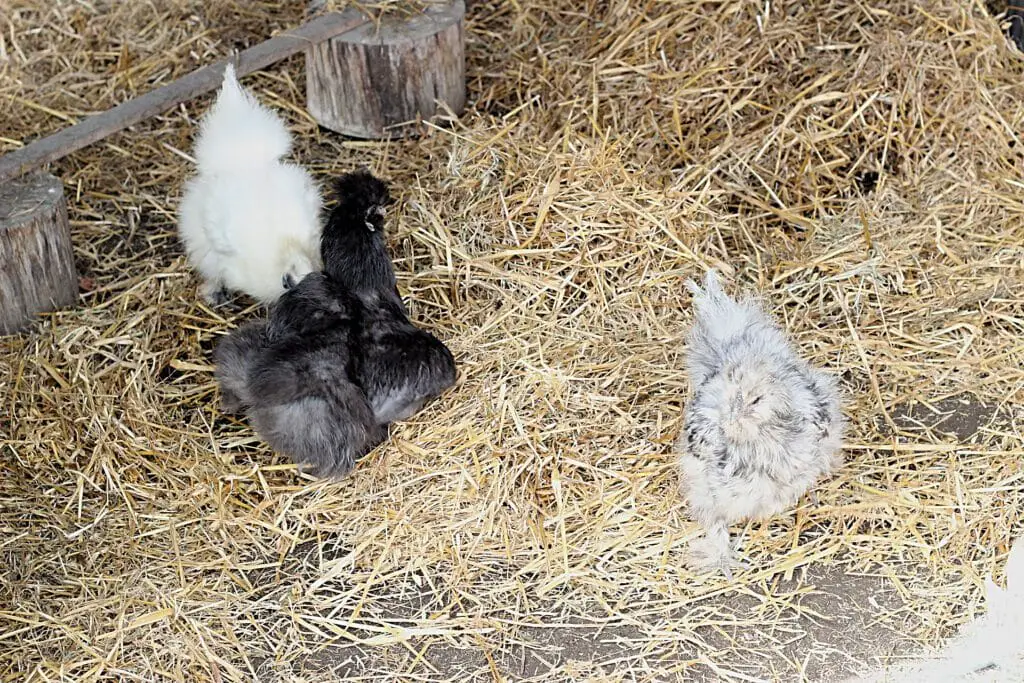
During my research, I found that bantam chickens are easy to keep, friendly, and don’t take a lot of space. I chose silkies as my first chicken. The bad part about choosing a bantam is that unless you want to pay out the wazoo for sexed pullets, they only come as a straight run. This means you don’t know what you’re getting.
I purchased my six-chick minimum at my local Rural King. Those fuzzy little stinkers were so cute! I kept them in my basement in a large cardboard box and had no idea what I was going to end up with! So, at about 8 weeks old and when it maintained warm temperatures outside, I moved them into the coop.
All the literature says to keep them locked inside the coop for at least a week to get used to their coop and to know that is their home. I did so, and still had to go out at dusk to put their little butts inside the coop for the night. Luckily, I only had to do this a few times until they got the idea.
At about 10-12 weeks of age, I realized I had two roosters in the bunch when they started to crow. Let me tell you, that is the funniest sound I ever heard! Definitely a direct descendent of the T-Rex! I was bummed to find I had two roos but was actually pretty lucky when you think about it. Out of six, I got two boys. Those aren’t bad odds.
Roosters and hens
As I mentioned earlier, bantams are usually purchased in a straight run. I ended up with two roos. Now I researched high and low on keeping roosters and found some literature stating that a couple of roosters can get along with each other if they grow up together. I gave it a try and it didn’t work.
Once they started fighting with each other I knew I had to get rid of one. Let’s just say that it is extremely difficult to rehome a rooster. As I was searching everywhere for someone to take one of them, I had to keep them separated. This means having an extra crate or place to keep a chicken other than the coop. Luckily, I had a dog crate to keep one in and eventually found a home for him.
One rooster is still too many
I was down to one rooster and four hens. I thought all was good, until the rooster started mating with the hens. All I can say is that he was a feisty one and loved his girls. The hens started getting bald patches on their backs and necks from the roo grabbing on to his girls. I bought the girls chicken jackets to protect their backs, but he still went at them hard.
I was so afraid that I was going to lose my hens that I came to the conclusion that I needed to rehome the rooster. I was extremely lucky to find a local couple who had large chickens and recently lost their silkie rooster and was looking for another.
Broody hens
The next obstacle that I learned is that silkies, although extremely cute, are also extremely broody. If you want to raise baby chicks, I highly recommend a silkie hen. They will sit and hatch any egg they can get.
If you are not looking to raise chicks, I would not recommend the silkie for a small flock. Their eggs are small to medium size and delicious, but when they go broody, they do not lay eggs at all!
Last summer, I had all four of my silkies go broody, which meant no eggs for over a month! Thank goodness I waterglassed eggs for what I thought would be winter storage but needed them during this time.
The BIG lesson I learned about small flock chicken care is that although they are really cute, unless you want to deal with unwanted roosters, stick with regular size hens that can be sexed.
Feed and water
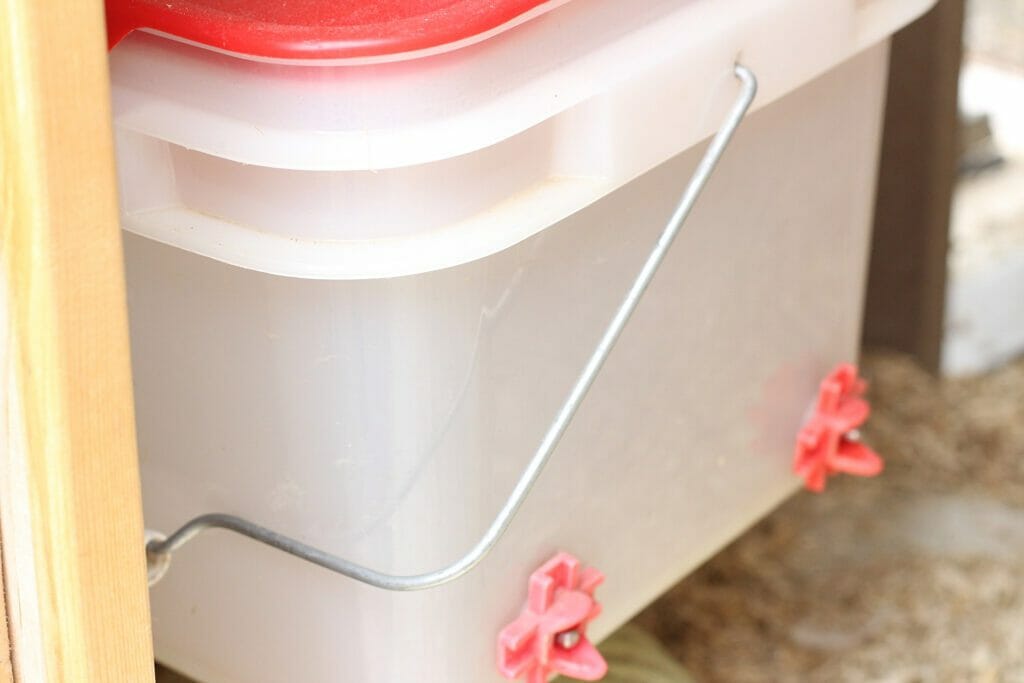
Chickens can make a mess of water and feed containers. They will almost always poop and throw dirt into them. I wanted to find a means of keeping everything as clean as possible, so I incorporated the use of nipple water buckets. These are fantastic for keeping water clean, and the lid has a hole in which I could use a water deicer in the winter months. The chickens adapted to it instantly. Unfortunately, if you have a chicken with a cross beak, this will not work.
I purchased two buckets so I could simply switch them out daily to make maintenance easy. I hung the food bucket so that the birds can’t climb or knock over the feeder. It is a matter of preference, but I have both the water and food containers inside the coop. The food stays fresh longer and I don’t have to worry about it getting damp and moldy causing waste.
The care for chickens include the need to dirt bath
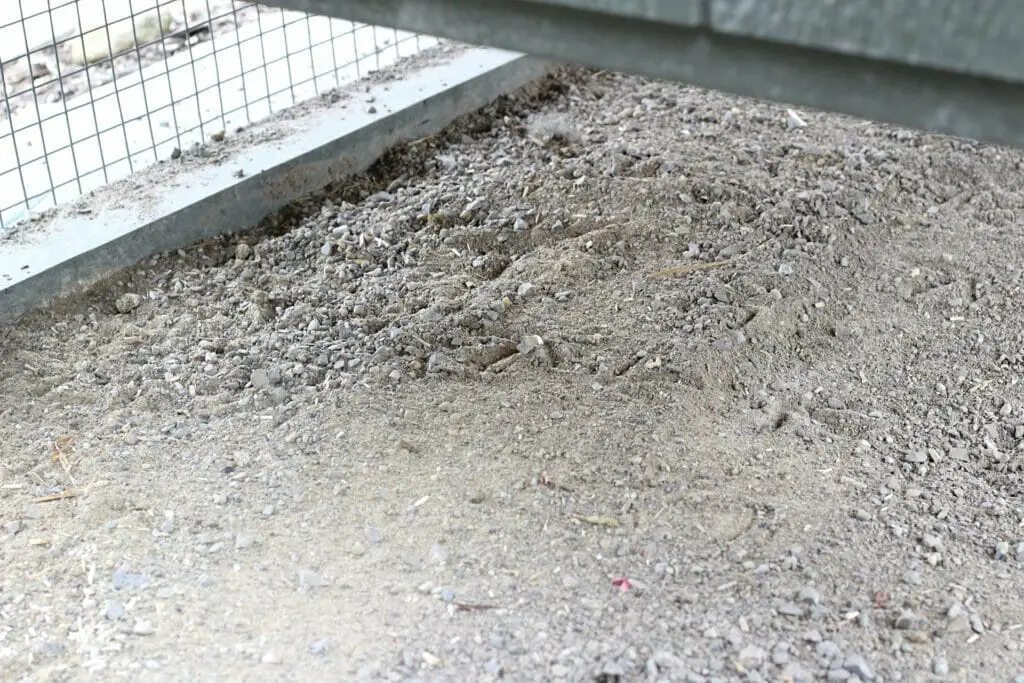
Chickens roll around in dirt to clean themselves. The little shards of dirt and sand actually cut through many pests outer shell and kill them. When planning my coop, I set it where I once had a swimming pool. This was convenient because I had a good dirt/sand base to work with.
The underside of the coop is open with a 4×4 run attached. I regularly add diatomaceous earth (food grade) to the sand mix to help in keeping bugs off my girls.
Even a small flock of chickens need extra room to roam
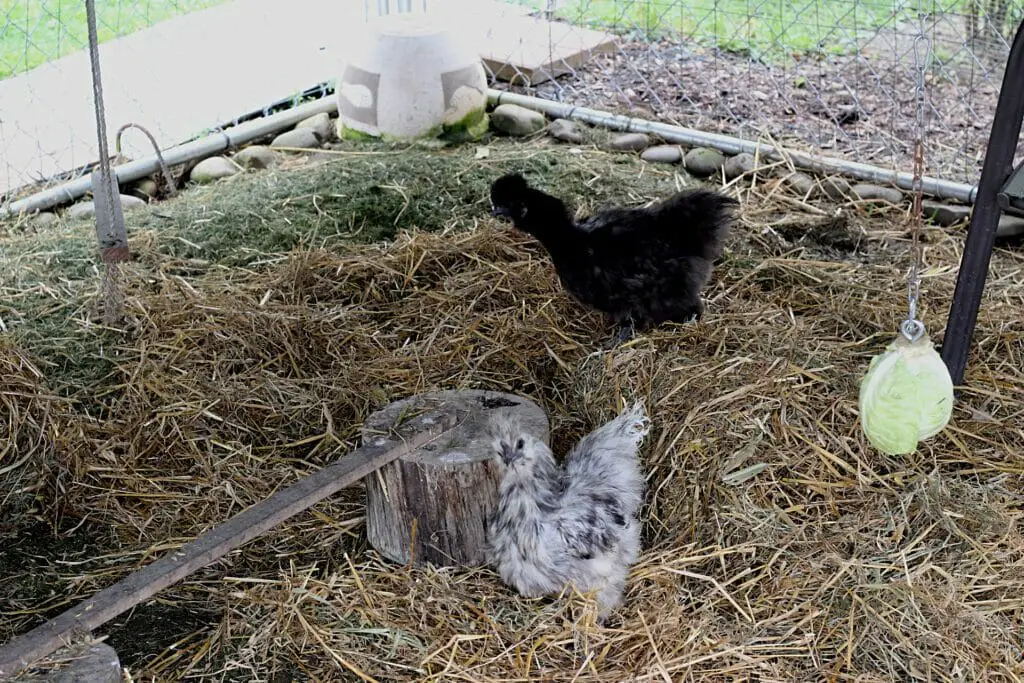
I wanted to give the girls extra space to roam. Chickens that can peck and scratch the ground are happy ones. I couldn’t let them simply free range in the yard because I live close to a road that gets quite busy at times.
I also was afraid of hawks picking off my babies, so I purchased 6×10 foot dog kennel panels and attached them to the coop. This provided them with ample room to stretch their legs and be safe at the same time.
Central Pennsylvania sees a lot of rain and snow through each year, so I needed to add a top to the large run. Placing tarps over the top does NOT do the trick, as they get quite heavy with rain and snow accumulation. I will chalk this lesson learned up to me just being stupid. Needless to say, I added a roof frame made for the kennel panels and then covered it with a large tarp. Also, netting was added over the top on the inside to keep birds and critters out from above.
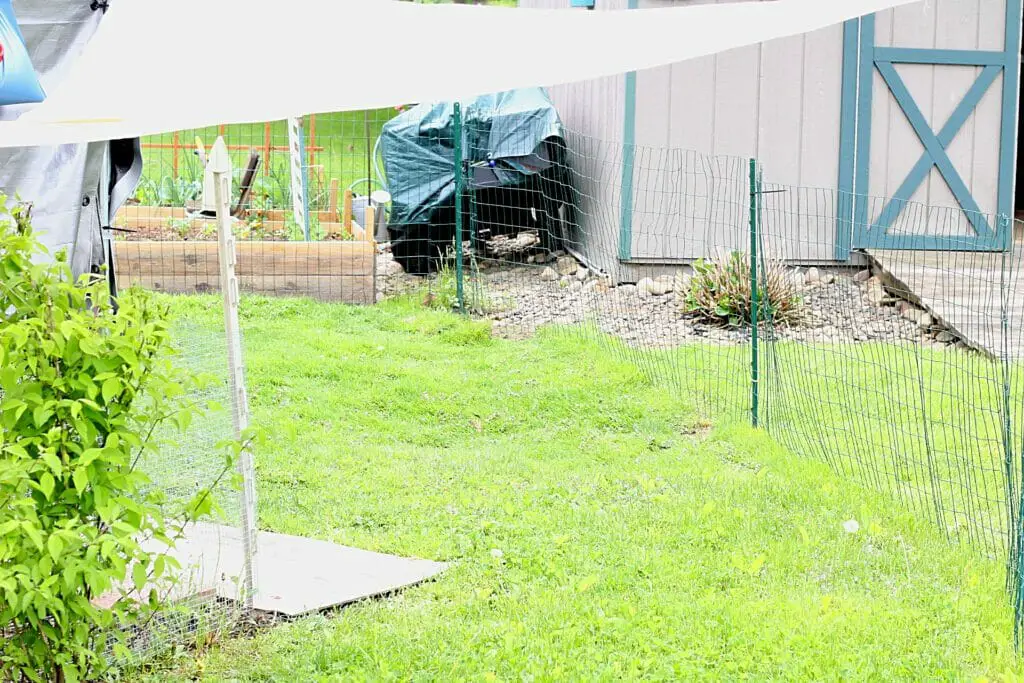
To allow my small flock of chickens access to grass, I attached simple fencing and T-posts around the perimeter of the coop and run. When weather permits, I simply open the run door and allow them to “free-range”.
Do you need heat to care for chickens?
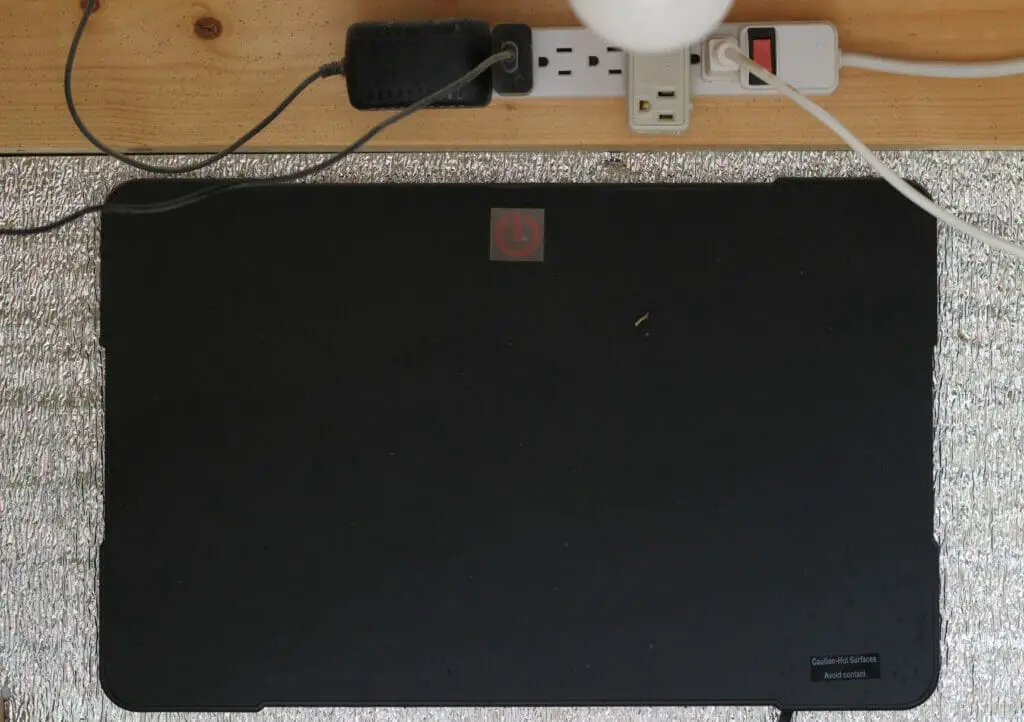
Most people will tell you that chickens do not need heat, and generally I would agree. I would NEVER recommend using a heat lamp in any chicken coop! The risk for a potential fire is simply too great to risk.
However, I have added some heat to the coop for my small flock of chickens because we do get some pretty cold and windy periods during winter in central Pennsylvania.
So, I went with this radiant heater. The heater has two settings for brooder and heat mode. I plugged the unit into a thermo-cube which senses the temperature and will turn on at 35 degrees and off at 45 degrees. This allows for just enough heat to keep the coop from freezing.
Enjoy your care of chickens
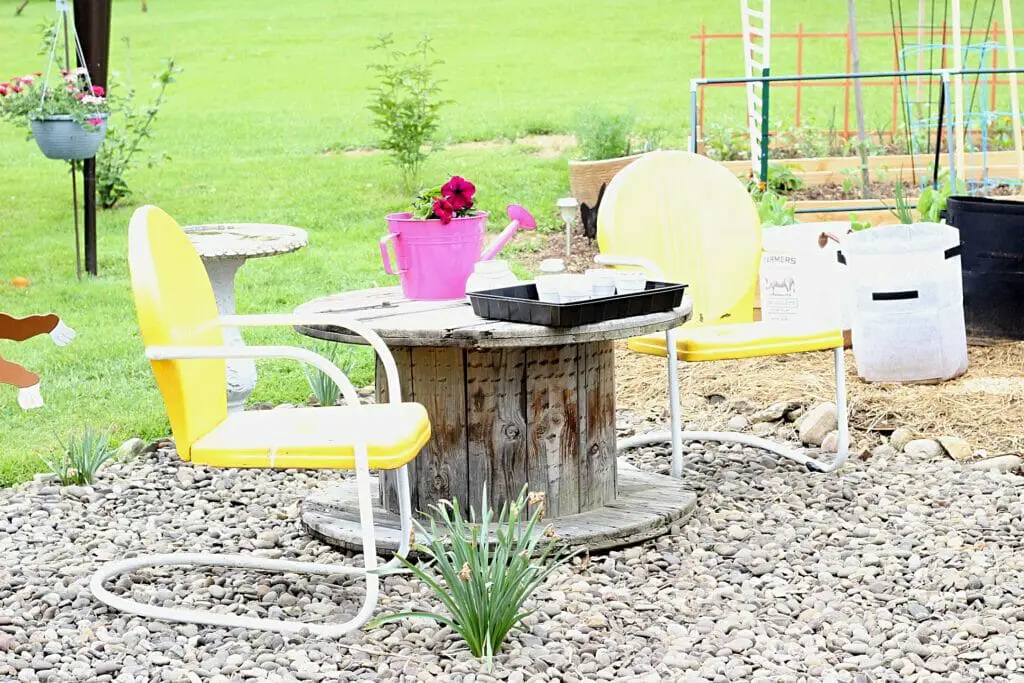
Chickens are social and highly entertaining. Make sure you add a cozy space to sip some wine and be entertained by these adorable creatures. I hope you enjoy the care for your small flock of chickens as much as I do! Thanks for stopping by!


Leave a Reply